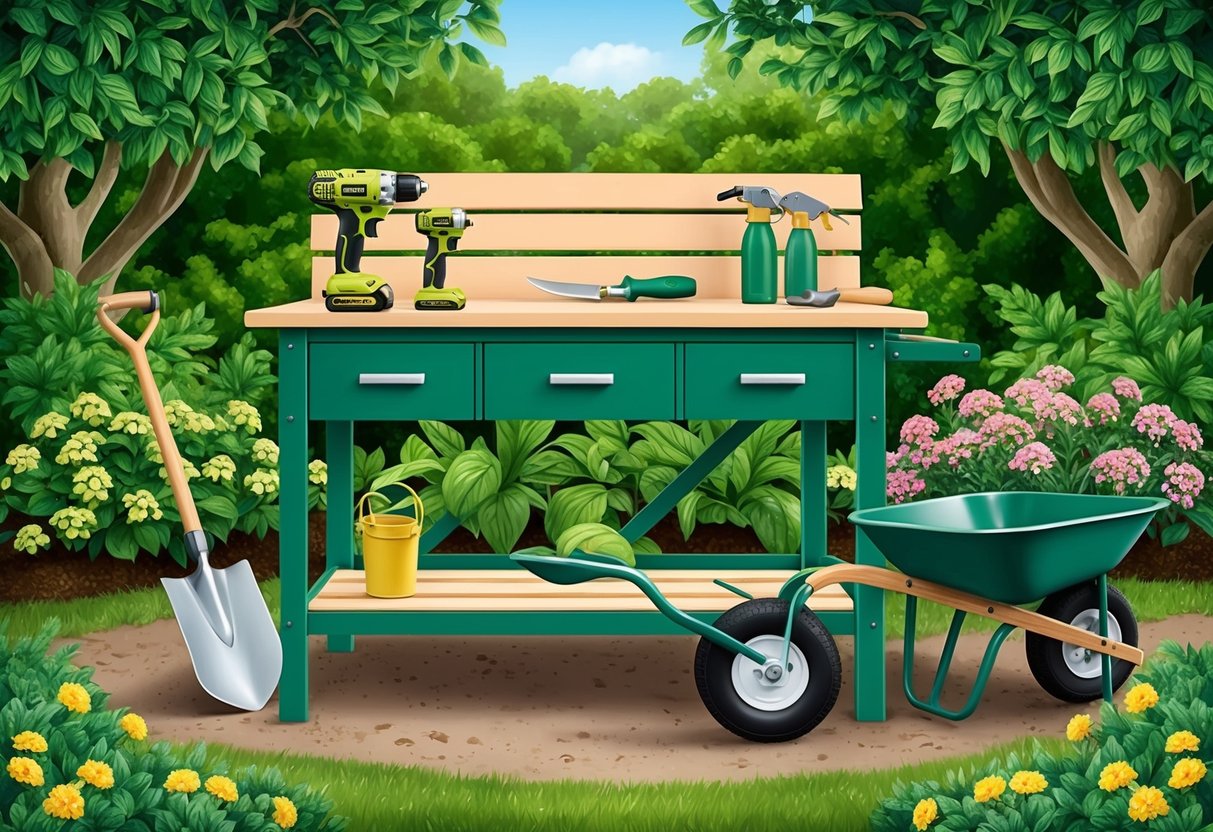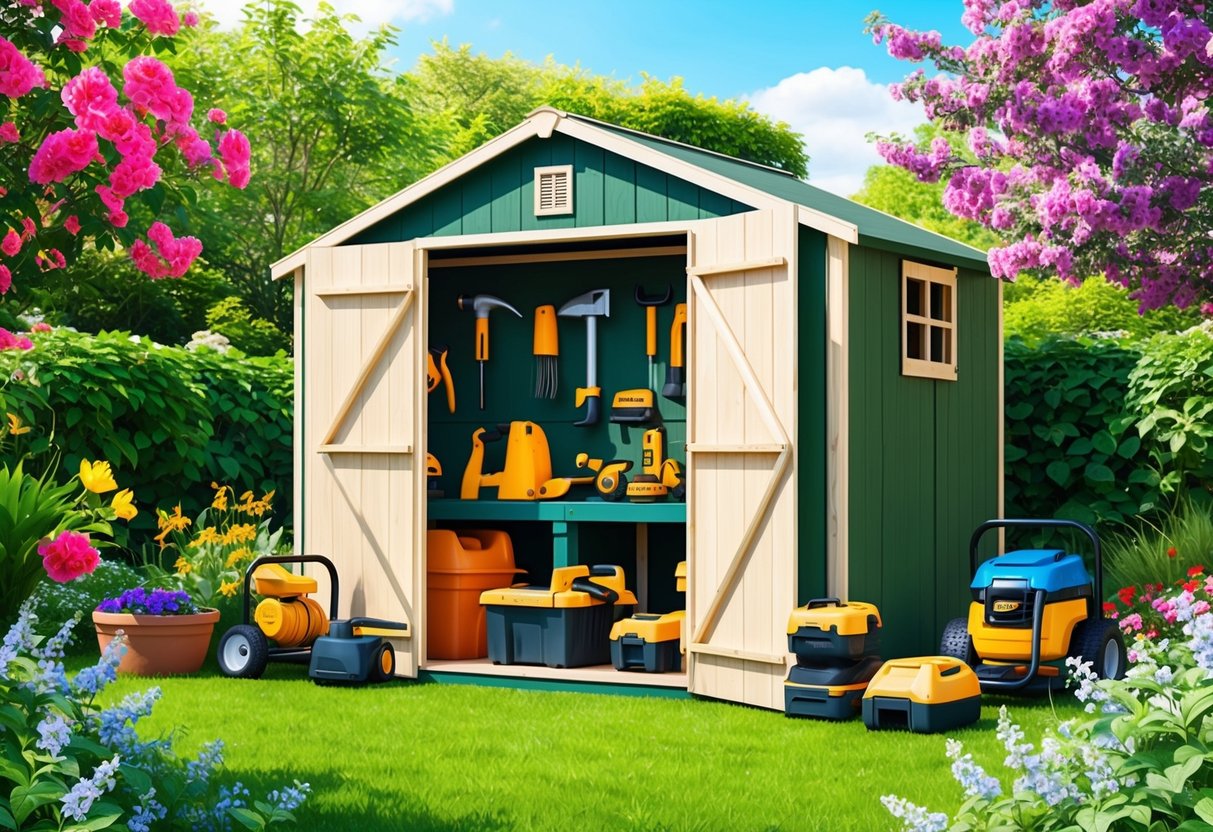
Gardening projects become much easier and more efficient with the right set of power tools. Essential power tools like cultivators, electric tillers, and cordless trimmers can transform the gardening experience, saving hours of manual labor and delivering professional results in less time.
These advanced garden tools take on tough tasks such as breaking up soil, trimming edges, and maintaining garden beds. They help gardeners keep their outdoor spaces healthy and beautiful with minimal effort.
Anyone looking to elevate their results should consider adding high-impact equipment, such as string trimmers or cultivators, to their arsenal. Not only do these tools reduce fatigue, but they also boost productivity, ensuring that every project—from planting to seasonal cleanup—runs smoothly.
For a detailed overview on must-have options, visit this guide on outdoor power tools.
Whether maintaining a tidy yard or taking on more ambitious landscaping, using essential garden tools designed for efficiency allows both beginners and experienced gardeners to achieve impressive outcomes. The right power tools set the stage for a seamless, enjoyable gardening experience all season long.
Must-Have Hand Tools for Gardeners

A successful gardening experience depends on choosing the right hand tools for digging, planting, soil preparation, and cleanup. With quality tools, tasks become easier, more efficient, and far less physically demanding.
Trowel Selection and Uses
A trowel is a small, pointed hand tool used for digging, planting, and soil scooping. A high-quality hand trowel should have a sturdy, stainless steel or carbon steel blade that resists rust and warping.
Ergonomic, comfortable handles help reduce hand fatigue during repetitive digging and transplanting. Hand trowels are crucial for tasks such as transplanting seedlings, removing weeds, and digging small holes for bulbs.
Opt for a hand trowel with a sharp edge for cutting through tough soil and roots. Look for tools with measurement markings to ensure planting depth accuracy, which is especially important when working with bulbs or delicate plants.
A garden knife, like a hori hori, can sometimes serve a similar purpose, especially when paired with a weeder or garden fork. In raised beds and containers, a hand trowel remains an irreplaceable basic tool for both new and experienced gardeners.
Essential Role of Spades and Shovels
Spades and shovels are the backbone of any gardener’s arsenal and perform heavier digging work that is hard for smaller hand tools. A standard garden spade features a flat, rectangular blade perfect for edging, cutting turf, and slicing through roots with precision.
Shovels have curved, broader blades and are better suited for moving loose material such as compost, gravel, or soil. When choosing a shovel or spade, durable construction and a comfortable D-shaped grip are essential for minimizing strain.
Stainless steel or carbon steel options stand up best to repeated use and resist bending. These digging tools also include variants like garden forks and digging forks that help break up compact soil, aerate beds, and incorporate organic matter.
Each tool serves its own distinct purpose, making them indispensable for soil preparation and bed maintenance throughout the seasons.
Choosing a Quality Rake
A rake’s design and construction impact its efficiency for both cleanup and soil preparation tasks. Gardeners typically select between two main types: a garden rake with stiff, straight tines for leveling and breaking up soil, and a leaf rake with flexible, fan-shaped tines for gathering leaves and debris.
A steel garden rake excels at spreading mulch and compost, as well as leveling raised beds. The sturdy, short tines of this tool can break apart soil clumps and smooth freshly dug earth.
Choose a handle long enough for comfortable use without excessive bending, and ensure attachment points are securely fastened. Leaf rakes, made from plastic or lightweight metal, are ideal for quickly clearing leaves without damaging turf.
Selecting rakes with replaceable heads or ergonomic grips adds longevity and comfort. For specialized spaces, consider a narrow hand rake for working between plants in densely planted beds.
Learn about the essential tools every gardener needs to make maintenance tasks easier and more efficient.
Cutting and Pruning Tools for Healthy Gardens
Maintaining plant health and encouraging vigorous growth requires the right cutting tools. The success of outdoor projects depends heavily on tool selection, especially when it comes to pruning shears, loppers, and hedge trimmers.
Pruning Shears and Their Benefits
Pruning shears, often called secateurs, are essential for every gardener. They are designed for making clean, precise cuts on stems and small branches up to ¾ inch thick.
Regular use of pruning shears prevents the spread of disease by creating smooth cuts that heal quickly. With an ergonomic grip and sharp blades, pruning shears minimize hand fatigue during repetitive tasks.
Different blade styles exist, including bypass and anvil, each suited to specific types of plant material. Bypass pruners excel at slicing live branches, while anvil pruners are better for dry or dead wood.
A reliable pair of pruning shears improves plant structure and allows gardeners to shape shrubs or perennials effectively. Many brands offer safety locks and replaceable parts to extend the lifespan of this vital gardening tool.
Shears Versus Hedge Trimmers
Both shears and hedge trimmers are designed to shape hedges, but their operation and best uses differ. Shears are manual tools, ideal for precision trimming of small bushes or topiary work where control is crucial.
Hedge trimmers, available in both electric and gas-powered varieties, allow for rapid, uniform cutting of hedges and larger shrubs. When covering large hedge surfaces, powered trimmers quickly remove excess growth, saving significant time on repetitive tasks.
Manual shears are preferred for close work near flowers or for sculpting detailed shapes. For general maintenance and efficiency, many gardeners opt for powered hedge trimmers.
Understanding the difference helps gardeners choose the right tool for the job.
Choosing the Right Loppers
Loppers are long-handled pruning tools used for cutting branches up to 2 inches thick. Their extra leverage makes them ideal for pruning small trees, thick shrubs, and hard-to-reach branches.
The choice between bypass and anvil blades affects performance, with bypass loppers preferred for live wood due to their cleaner cuts. Key features to consider include handle length, blade sharpness, and weight.
Telescoping handles extend reach, while non-stick blade coatings reduce sap build-up and sticking. Cushioned grips improve comfort for extended use.
By investing in high-quality loppers, gardeners can efficiently maintain healthy trees and large shrubs, reducing plant stress and promoting robust regrowth.